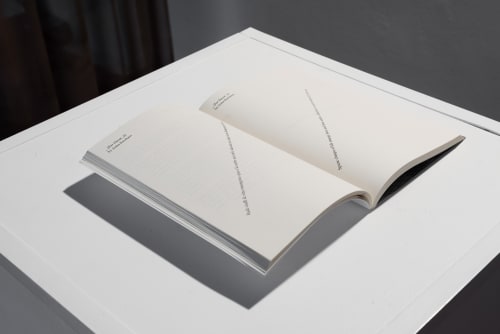Mucho Mas! | 'Decor': Thomas Kuijpers
Decor is an experiment by Thomas Kuijpers, departing from the way images to him most of the time are incapable of transmitting emotions on a deeper level, because they are always approached by him from a professional point of view, and it is quite impossible to ‘turn this off’. The content gets rationalised and analysed before a true emotional respons can settle. He’s less used to textual emotion in that way, so the response to an emotion transmitted by text is usually much stronger, and less superficial.
Thomas made a series of works, they are landscapes, without persons; decors of the most horrific, repulsive videos he’s seen in years: propaganda videos by IS. After watching fragments of those videos, feeling numb, being not as emotionally disturbed as he would have expected while thinking about them, he started looking for writers, who could write a new scene to fill this decor, in an attempt to see if this combination can evoke a new feeling that, to him, is stronger than the original image. An attempt to override the handicap of the over-rationalisation of images by partially transforming them into a new format. These empty decors will be presented with a small textbook, in which new interpretations of these scenes to fill the decor will be printed.
Thomas Kuijpers (b. 1985, Helmond, NL) studied photography at the AKV St.Joost, Breda, and is represented by LhGWR, The Hague (NL). Earlier this year he had his first solo show Paradigm #01 at B.A.D., Brussels (BE). The past few years his work appeared in several group exhibitions and has been acquired for the collection of the Stedelijk Museum Amsterdam. He currently lives in Rotterdam, but holds onto his studio in Eindhoven where his ever expanding archives and collections of media material are stalled.
Thomas Kuijpers’ is a visual artist, who investigates how image and text are used to create a narrative about a true event. He's interested in the way the representation of this truth is constructed and always on the lookout for topics wherein this representation has different verions. By playfully adding extra versions of the ‘truth’ to a certain discourse of truthfinding; or distracting different versions of this truth within the topic, Kuijpers is constantly questioning the value of the concept of truth- and it’s representation.
The use of archival materials is almost always the starting point of the work—he is a big collector. Everything starts with a collection. A collection in which he thinks he can find this red line, this fragment, this small metaphor that unravels the way the story is told. This collection, or a part of the collection, pretty much always becomes a part of the work itself (whether or not in processed or unprocessed form).
Some voices might be a bit louder as others, but that’s no reason to think one is more truthful then the other. Through manipulation, recontextualizing existing materials and distilling small details from big stories; Kuijpers makes us understand the difficulties when attempting to capture the truth.















